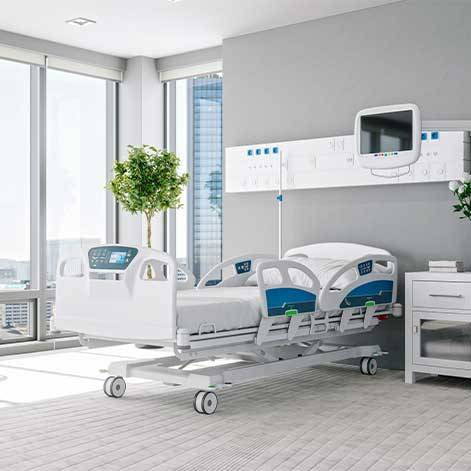
A hospitals very design is climate-emphasized-definitely more focused on comfort, safety, and accessibility than almost any other factor in the healing process. Modern Hospital Furniture Manufacturers assume this responsibility with more care than ever before. In these patient-centric models of care, these manufacturers appear key to the ergonomically designed structure of the furniture used within a hospital serves to support all aspects of health recovery and workflow efficiency, both patient and healthcare provider well-being. Hospital furniture can no longer be cataloged as drab, generic home furniture. Rather, purpose-specific furniture that goes beyond normal utility has been integrated to heal the environment. These manufacturers currently concentrate on building furniture that widely suits current treatment standards, infection control, and user-centric design. Their aims are dual-yet far-reaching: to create a space that comforts the person, clinically supports practicalities, and concedes healthcare variability.
A well-designed healthcare facility harmonizes good looks with immense functionality. Furniture isn't just meant to add a nice touch, but it is of necessity to support clinical operations effectively. Hospital beds, for instance, must come with mechanisms for quick patient repositioning and height adjustments and should easily be linked to patient monitoring devices. Storage facilities, trolleys, and examination tables must be mobile, hygienic, and safe. Another side of sustaining clinical work is to produce diagnostic and treatment devices. Many Medical Devices Manufacturers, like D.R. Surgicare, also assist in bringing power to mature corporations which work towards the same drive-or as opposed to, grossly-and both evoke client outcomes that are at once novel.
Patient-centric treatment is not only a mere buzzword; it is designed to provide for patient comfort, dignity, and needs before any other consideration. This is where the rubber meets the road in terms of what furniture makers can do. The recliners designed for maternity wards, pediatric hospital beds, and easy chairs for geriatric care are all incidental matters that very much demonstrate that specialized furniture can do them nicely. Waiting area designs, much as their furniture function, are almost secondary-or probably more aptly, only a bit less importance-which would have admittedly little to no positive bearing upon the physical condition of those currently being cared for in the facility, such as one that is comfortable and easy to clean to help reduce stress levels of families and visitors, and eventually ease into patient recovery-
Now, hospitals not only specialize in mainstream areas, but the call to find settings for furniture in niche areas, such as bariatrics, is growing. Here comes in Bariatric Instruments Manufacturers as game-changers. Bariatric patients require special equipment that provides comfort, safety, and support for their larger body frame. Bariatric furniture is constructed in a way that serves all patients, regardless of size, in terms of care. Companies in this sector have to move past just looking at weight capacities and think about the engine behind it, while being all about delivery when it comes to accessibility and dignity. The ergonomics engineered bariatric implementations provide caregiver relief from injury, which ultimately makes a difference and best translates to patient care.
Hospitals are, by nature, change-prone centers where prompt reactions and adaptability retain significance, and furniture tops as far as hygiene is concerned. Prompt disinfection by routinely movable furniture has become part, especially in light of stricter infection control protocols, where materials like antimicrobial laminates, stainless steel, and wipe clean fabrics are being promoted as best practice. Additionally, should the use of furniture be changed by shifting regularly or configuring more spacious, the above realities always add value to healthcare infrastructure. As hospital furniture makers have more money going into their R&D, they are now aiming for not only materials with a long lifespan but also design elements that can reduce the number of touchpoints, facilitate sanitation as much as possible, and help in creating a safer environment. The image of these indispensable partners has graduated beyond just offering physical hardware to giving personal experience within the healing space.